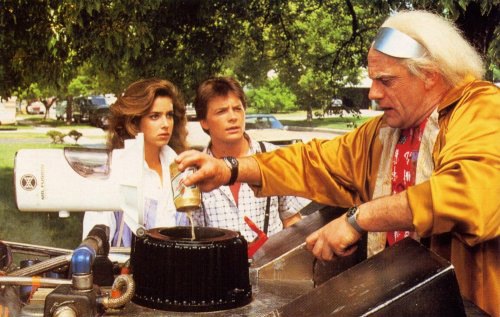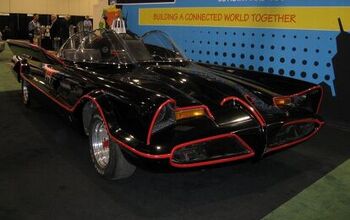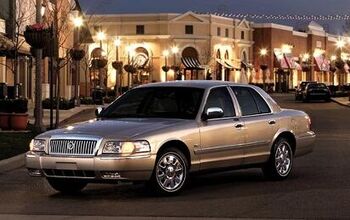Mr. Fusion?

Nuclear fusion is the preferred deus ex machina in the minds of some who long for cheap, abundant energy, although fusion will never be either. The challenge: containing the plasma fuel that heats to millions of degrees inside a “bottle” made of magnetic fields produced by a superconducting magnet kept at absolute zero a few feet away. The concept’s been likened to trying to hold water inside rubber bands. A press release from MIT News entitled “New Insights on Fusion Power” celebrates the kind of esoteric advances that indicate that fusion lies somewhere beyond the Hubble Deep Field in the cosmology of future energy sources (i.e. just as distant as when I first wrote about it in 1978).
MIT scientists have discovered a way to “push the plasma around inside the [reactor] vessel” with radio-frequency waves. With this, they can prevent heat loss to the vessel walls, as well as the “internal turbulence that can reduce the efficiency of fusion reactions.” That, they say, could be crucial to the planned International Thermonuclear Experimental Reactor (ITER), currently being constructed in France. But these are just a couple of a number of issues preventing fusion reactors from producing more energy than they consume.
Another recent development which could help the ITER: a new way of injecting a blast of argon or neon into the reactor vessel– to quench “a kind of runaway effect that could cause severe damage to reactor components” (uh-oh)– by turning plasma energy into light. For the ITER, such a blast would require, for a mere thousandth of a second, the equivalent of the total electricity production of the United States. I can smell the grid frying from Caribou, Maine, to San Diego.
So, for the near future, EVs will depend on coal (which produces slightly less than half of US electricity), natural gas (21 percent), nuclear (19 percent), hydro (6.9 percent) and “other” (includes wind, 3.3 percent) and oil (1.1 percent).

I'm a freelance journalist covering science, medicine, and automobiles.
More by David C. Holzman
Latest Car Reviews
Read moreLatest Product Reviews
Read moreRecent Comments
- L&L I have a 2004 Xb right now the odometer reads 265,000 miles no mayor issues ,pay 14,500 . you don't need complaints about this lunch box the best .
- Jeanbaptiste 2022 Tesla model 3 performance ~35000 miles tires - ~$1000ish. Several cabin filters ~$50
- El scotto No rag-top, no rag-top(s) = not a prestigious car brand. Think it through. All of the high-end Germans and Lexus have rag-tops. Corvette is really its own brand.World-leading engines. AMG, M, S and well Lexus is third-world tough. GM makes one of the best V-8s in the world in Bowling Green. But nooooo, noooo, we're GM only Corvettes get Corvette engines. Balderdash! I say. Put Corvette engines in the top-tier Cadillacs. I know GM could make a world-class 3.5 liter V-6 but they don't or won't. In the interior everything that gets touched, including your butt, has to feel good. No exceptions.Some think that those who pay above MSRP and brag about it are idiots. Go the opposite direction, and offer an extended 10-year 100,000-mile factory warranty. At a reasonable price. That's Acura's current business model.
- Carrera 2014 Toyota Corolla with 192,000 miles bought new. Oil changes every 5,000 miles, 1 coolant flush, and a bunch of air filters and in cabin air filters, and wipers. On my 4th set of tires.Original brake pads ( manual transmission), original spark plugs. Nothing else...it's a Toyota. Did most of oil changes either free at Toyota or myself. Also 3 batteries.2022 Acura TLX A-Spec AWD 13,000 miles now but bought new.Two oil changes...2006 Hyundai Elantra gifted from a colleague with 318,000 when I got it, and 335,000 now. It needed some TLC. A set of cheap Chinese tires ($275), AC compressor, evaporator, expansion valve package ( $290) , two TYC headlights $120, one battery ( $95), two oil changes, air filters, Denso alternator ( $185), coolant, and labor for AC job ( $200).
- Mike-NB2 This is a mostly uninformed vote, but I'll go with the Mazda 3 too.I haven't driven a new Civic, so I can't say anything about it, but two weeks ago I had a 2023 Corolla as a rental. While I can understand why so many people buy these, I was surprised at how bad the CVT is. Many rentals I've driven have a CVT and while I know it has one and can tell, they aren't usually too bad. I'd never own a car with a CVT, but I can live with one as a rental. But the Corolla's CVT was terrible. It was like it screamed "CVT!" the whole time. On the highway with cruise control on, I could feel it adjusting to track the set speed. Passing on the highway (two-lane) was risky. The engine isn't under-powered, but the CVT makes it seem that way.A minor complaint is about the steering. It's waaaay over-assisted. At low speeds, it's like a 70s LTD with one-finger effort. Maybe that's deliberate though, given the Corolla's demographic.


































Comments
Join the conversation
I say we hand it over to Elon Musk. He'll have a car running on fusion before the end of next year, priced at 100 000$, with a trillion mile range, 800 million horsepower, and a transmission made of diamond. Taking deposits now.